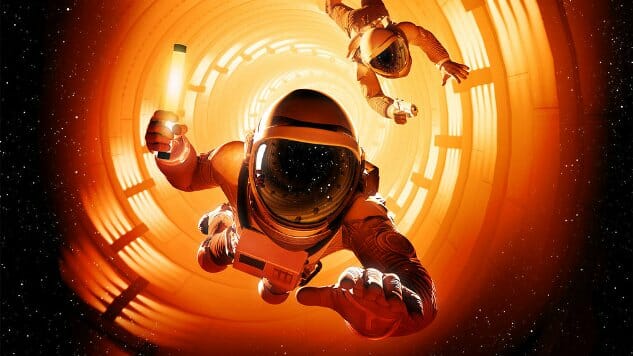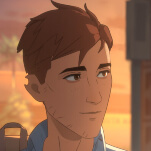Downward Spiral: Horus Station Presents Puzzles with No Gravity

The beauty of Downward Spiral: Horus Station is in its mechanical premise. In space, there is no gravity. Therefore in space, WASD does not work. In space, you’re gonna have to find an alternate means of forward momentum.
It was this idea that first drew me to Downward Spiral: Horus Station. I’ve played a lot of games set in space, but few, if any, addressed the navigational challenges of zero gravity. The concept opens up new obstacles in an exploration-focused environment, offering a thought provoking spin on how the player interacts with their surroundings. But is it enough? Can an entire game be built on it?
Downward Spiral: Horus Station is split between seven chapters, covering several sections of a mysteriously abandoned space station. As you carefully make your way through its empty rooms and corridors, piecing together clues on how to reconnect its many department hubs, the question lingers: why was the station abandoned, and why has it been shut down?
The game’s navigational novelty is a great feature in terms of pacing, especially in a tentative atmosphere. Players must cling and grip to the wall, then release, drifting in the general direction they need to go. Certain tools, some of which make travel easier (like a grappling device) can be added to the mix, creating a unique back and forth as the player adapts and improvises between using the equipment at their disposal and their own natural trajectory. It is challenging but also instinctual.
The team made a significant point to reduce the amount of immersion-breaking narrative devices seen in other games, like audio logs and diary entries, which means that figuring out the objective of each chapter and what course of action to take will rely heavily on observing their surroundings. Luckily, 3rd Eye Studios has done a fair job of using visual and audio hints to draw the player to the next area. I found it easy to navigate through the levels based on what the flashing lights or station status screens were telling me. It felt a lot like playing Myst, in that both games require an active role in interpreting the environment and do very little hand-holding when it comes to puzzles or objectives.
But while the pedigree of the design team is promising, especially in terms of lead designer Greg Houden’s primary background in film, here’s where the lack of specific experience in games development may have backfired: without some key game design conventions, it can be hard to figure out some of the conclusions they want you to draw in a specific scenario or environment.
-

-

-

-

-

-

-

-

-

-

-

-

-

-

-

-

-

-

-

-

-

-

-

-

-

-

-

-

-

-

-

-

-

-

-

-

-

-

-

-








































